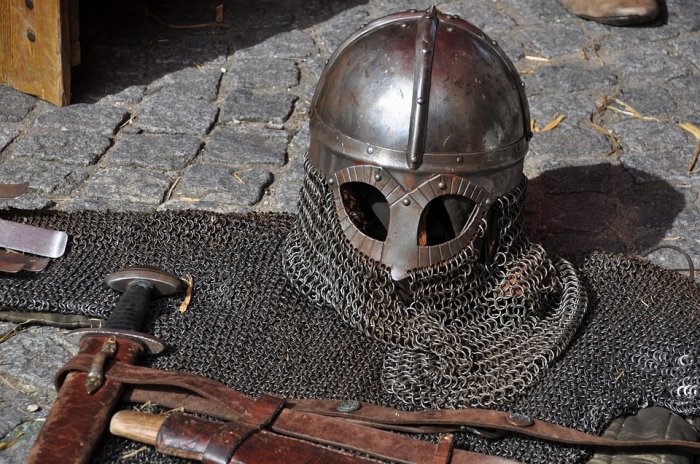Fascinating Medieval Knight Armor History
Rafael - AncientPages.com - In the past, every warrior that had to venture off into battle needed to protect themselves. In fact, it was the armor that aided in defining themselves as a social class and military unit. During the middle ages, armoring and protecting oneself was extremely expensive. It was a privilege for only those who could afford these gear.
A knight’s armor was specifically crafted for the medieval knight. It became their defining characteristic especially in battle. Their armor also represented the military unit they were part of. It was one of the best ways to exhibit their social class.
All in all, the armor of a medieval knight was highly important. This is most especially if the warrior wanted to survive on the bloody battlefield during the medieval era.
Throughout history, the medieval armor went through numerous developments and enhancements. Before the medieval era, the typical type of armor was made of the chainmail and leather. If you think about it, the materials used don’t seem to work well for protection. However, remember that weapons in the past were more primitive.
As weapons started evolving and improving, the medieval armor did so as well. And as time passed, the chainmail became more vital for a warrior. Its interlinked rings were highly effective against slash-type weapons, and were eventually used as an armor even after the medieval period.
When medieval warriors started integrating weapons that used blunt force, a more protective kind of armor was necessary. The very first of its kind was a metal breastplate. It proved to be efficient during battles; thus, gave the idea that covering the entire body with metallic plates was good.
After numerous trial and errors, the armor suit was developed. It also became the basic protective gear during battle, thus, becoming the knight’s armor that we know of today.
Different Medieval Knights Armor
During the medieval period, armor was classified into three types based on function: the jousting armor, ceremonial armor, and the field armor.
The field armor was designed specifically for combat. Its primary characteristics was that the armor was flexible and light. It allowed the knight to move easily while still receiving adequate protection.
Just like what its name states, the ceremonial armor was made for ceremonies. This is why it was intricately designed with gold, silver, copper, or cloth. Its appearance was highly important since it was a piece presented for important occasions. Lastly, the jousting armor was created for extreme protection even if it compromised the mobility of the user.
Different Parts Of A Medieval Knights Armor
Generally, it was basic knowledge that during the medieval period and in history, the gallant knights represented a group of elite warriors. This was the reason why blacksmiths established an armor that was crafted to be functional, practical, as well as decorative.
Here are all the parts that form and complete a knight’s medieval armor.
Helm
The helmet, which was often referred to as the helm, was vital for protecting the knight’s head and his face. Conical helmets were made from a sheet of iron or steel and some had interior bands to provide more strength. To add more comfort, the Knight helmets were padded and lined with leather; it also had grass, horse hair, or similar items.
The straps in the helmet and the scalloped lining on top were pulled together by a drawstring. This allowed for possible adjustments so the slit in the visor had the proper height. Another strap for the chin was also present. This was to keep the helmet in place. There were also ventilation holes that were added to the lower front portion of the helm. This allowed the user to have adequate breathing. During the 1330 CE, visors protruded from the helmet which allowed the user easier and better breathing. Other helmets had a bevor or plate hanging down to keep the throat safe.
Another type of helmet was the kettle hat. Although it was not commonly used by knights, it was still a choice for other warriors.
Breastplate
The breastplate became more widely used around the mid-14th century CE. This armor was specifically made to protect the stomach. It was also mounted over a placard using a few hinges and was worn in a way that it could be easily worn or removed.
Breastplates were curved, and at times, these featured certain arrangements of flexible metal hoops or strips around the waist area. These were attached with the help of buckles, straps, or semicircular rivets. Occasionally, knights wore a simpler backplate and the breastplate was attached to the front plate using hinges.
Leg Armor
The leg armor came in two types: the greaves or metal shin guards which protected the lower legs, and the poleyns or bendable types of armor. Even if the maille shirt’s skirt or the cuirass’ tassets were able to protect ones upper legs, the armor can still be avoided if an opponent thrusts from below.
This is why cuisses were worn to guard against such blows. Padded cuisses that were made like the gambeson were often worn by knights around the 12th and 13th centuries. These were worn over chausses and poleyns and may also have been directly attached to the cuisses.
Vambraces and Gauntlets
Vambraces were made to protect the arms of the wearer, while the gauntlets protected the hands and wrists. For vambraces, these can be worn with or without separate couters in a full suit of medieval armor. These were made from either steel or boiled leather and were occasionally reinforced with longitudinal strips of hardened hide.
Chainmail
The chainmail was one of the earliest metallic armor that medieval knights wore. It was made of thousands of interlocked rings that were handwoven to form a mesh shirt, coif, or leggings.
Since mild steel was produced in the medieval period, each of the rings had to be riveted. This was to prevent the rings from spreading and opening. The chainmail served as an additional form of protection underneath the armor, thus keeping the exposed areas of the user, safe.
Written by – Rafael - AncientPages.com
Copyright © AncientPages.com All rights reserved. This material may not be published, broadcast, rewritten or redistributed in whole or part without the express written permission of AncientPages.com
More From Ancient Pages
-
 Mysterious Disappearance Of Philip Christoph Königsmarck – Where Is The Swedish Count Buried?
Featured Stories | Feb 21, 2024
Mysterious Disappearance Of Philip Christoph Königsmarck – Where Is The Swedish Count Buried?
Featured Stories | Feb 21, 2024 -
 Hypatia Of Alexandria – Brilliant, Controversial Scientist And Her Dramatic End
Featured Stories | Jan 7, 2019
Hypatia Of Alexandria – Brilliant, Controversial Scientist And Her Dramatic End
Featured Stories | Jan 7, 2019 -
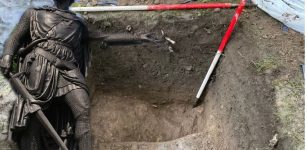 Most Important Road In Scottish History Found In The Garden Of The Old Inn Cottage Near Stirling
Archaeology | Nov 16, 2023
Most Important Road In Scottish History Found In The Garden Of The Old Inn Cottage Near Stirling
Archaeology | Nov 16, 2023 -
 Ancient Egyptians Knowledge Of Psychiatry – Importance Of The Sorcerer And The Mysterious Zar Dance
Ancient History Facts | Apr 24, 2020
Ancient Egyptians Knowledge Of Psychiatry – Importance Of The Sorcerer And The Mysterious Zar Dance
Ancient History Facts | Apr 24, 2020 -
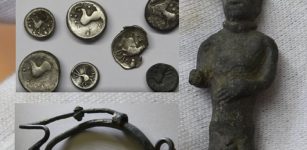 Bronze Celtic Figurine Of Man With Golden Eyes Found In Slovakia
Archaeology | Dec 12, 2020
Bronze Celtic Figurine Of Man With Golden Eyes Found In Slovakia
Archaeology | Dec 12, 2020 -
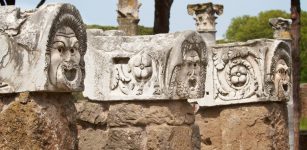 Ostia Antica – Unique Ancient Harbor City In The Suburbs Of Rome
Civilizations | Nov 29, 2018
Ostia Antica – Unique Ancient Harbor City In The Suburbs Of Rome
Civilizations | Nov 29, 2018 -
 The ‘Chinese Pyramids’ And The Pole Star
Archaeology | Nov 30, 2018
The ‘Chinese Pyramids’ And The Pole Star
Archaeology | Nov 30, 2018 -
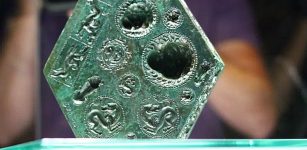 Unique 2,000-Year-Old Hexagonal-Shaped Bronze Matrix Of Sarmizegetusa Regia, Romania
Artifacts | Jan 7, 2016
Unique 2,000-Year-Old Hexagonal-Shaped Bronze Matrix Of Sarmizegetusa Regia, Romania
Artifacts | Jan 7, 2016 -
 Neith – Fearsome Egyptian Mother Of The Gods – Creator Of Sun God Ra, His Archenemy Serpent God Apophis And The Universe
Egyptian Mythology | Jul 9, 2018
Neith – Fearsome Egyptian Mother Of The Gods – Creator Of Sun God Ra, His Archenemy Serpent God Apophis And The Universe
Egyptian Mythology | Jul 9, 2018 -
 Why Was Napoleon Bonaparte Defeated At Waterloo?
Ancient History Facts | Jul 3, 2017
Why Was Napoleon Bonaparte Defeated At Waterloo?
Ancient History Facts | Jul 3, 2017 -
 Secrets Of A Lake That Could Re-Write Ancient History Of America – Myths And Gods Reveal A Complex Story – Part 1
Ancient Mysteries | Jun 4, 2018
Secrets Of A Lake That Could Re-Write Ancient History Of America – Myths And Gods Reveal A Complex Story – Part 1
Ancient Mysteries | Jun 4, 2018 -
 Bizarre Mummies And Skeletons That May Offer Evidence Strange Mythical Creatures Did Exist
Ancient Mysteries | Nov 16, 2018
Bizarre Mummies And Skeletons That May Offer Evidence Strange Mythical Creatures Did Exist
Ancient Mysteries | Nov 16, 2018 -
 Abydos: One Of The Most Important Cities Of Ancient Egypt
Featured Stories | Jul 15, 2016
Abydos: One Of The Most Important Cities Of Ancient Egypt
Featured Stories | Jul 15, 2016 -
 2,000-Year-Old Teeth Reveal The Diet Of An Iron Age Woman
Archaeology | Oct 26, 2022
2,000-Year-Old Teeth Reveal The Diet Of An Iron Age Woman
Archaeology | Oct 26, 2022 -
 Why Did Sages And Shamans Repeatedly Visit The Mysterious Finnish Pirunkirkko Cave (Devil’s Church)?
Archaeology | Nov 27, 2023
Why Did Sages And Shamans Repeatedly Visit The Mysterious Finnish Pirunkirkko Cave (Devil’s Church)?
Archaeology | Nov 27, 2023 -
 Linked Human Skeletons Lying In Spiral Circle Unearthed In Pre-Aztec Burial Pit Near Mexico City
Archaeology | Feb 7, 2018
Linked Human Skeletons Lying In Spiral Circle Unearthed In Pre-Aztec Burial Pit Near Mexico City
Archaeology | Feb 7, 2018 -
 Chaneques: Mischievous Legendary Tricksters In Mexican Folklore
Featured Stories | Apr 14, 2020
Chaneques: Mischievous Legendary Tricksters In Mexican Folklore
Featured Stories | Apr 14, 2020 -
 Unexplained Encounters With Invisible Barriers – Mysterious Rays And Energy Fields
Featured Stories | Jul 17, 2018
Unexplained Encounters With Invisible Barriers – Mysterious Rays And Energy Fields
Featured Stories | Jul 17, 2018 -
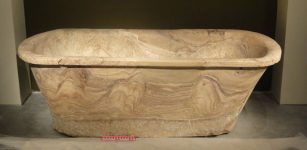 Where Were Herod The Great’s Royal Alabaster Bathtubs Quarried?
Archaeology | May 17, 2022
Where Were Herod The Great’s Royal Alabaster Bathtubs Quarried?
Archaeology | May 17, 2022 -
 Mysterious Yamacutah – A Sacred Native American Indian Shrine
Artifacts | Sep 18, 2020
Mysterious Yamacutah – A Sacred Native American Indian Shrine
Artifacts | Sep 18, 2020


